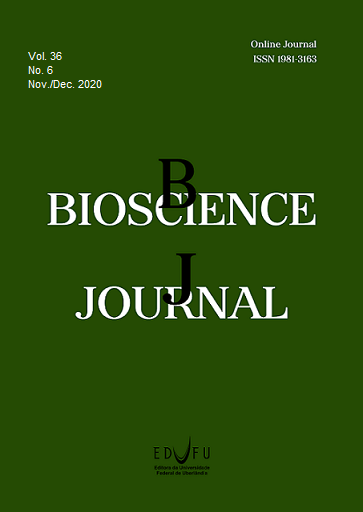Severe cardiac insufficiency secondary to cardiotoxicity with clinical and morpho-functional improvement after optimised clinical treatment: case report
DOI:
https://doi.org/10.14393/BJ-v36n6a2020-48129Keywords:
Cardiac Insufficiency., Early detection., Chemotherapy., Biomarkers.Abstract
Many therapies used for cancer (pathology whose cases are progressively increasing in the world) such as chemotherapy and radiotherapy have numerous adverse effects, with cardiotoxicity being one of the most important. This can be defined from the detection, by an imaging method, of a reduction of at least 10% in the left ventricular ejection fraction (LVEF), bringing it to a value below 53%. Anthracyclines (such as Doxorubicin), Trastuzumab, and Taxanes (Docetaxel) are among the most associated chemotherapeutics. To emphasize the importance of optimized treatment for heart failure and to review the main updates on the theme of cardiotoxicity. Case report and bibliographic review on the latest updates to the management of cardiotoxicity and associated heart failure. When correctly identifying the main risk factors associated with chemotherapy and the individual to develop myocardial injury, it is possible to perform the monitoring by means of two main predictors: the myocardial tension strength and the biomarkers. In this sense, changes associated with these predictors may allow early intervention through appropriate treatment and, with the advancement of research, even prevention, mainly using the association of Carvedilol with Enalapril. Continuous monitoring and early initiation of drug therapy for heart failure are clearly associated with a lower degree of myocardial injury and a lower rate of complications. In addition, there is still an increasingly promising possibility in relation to preventive drug therapy, however, there is still a lack of studies on this topic.
Downloads
Published
Issue
Section
License
Copyright (c) 2020 Pedro Ribeiro Rosa, Igor Mychael Melo Ferreira, Guilherme Silva de Mendonca, Fábio Vieira Fernandes, Rodrigo Penha de Almeida, João Lucas O’Connell, Elmiro Santos Resende

This work is licensed under a Creative Commons Attribution 4.0 International License.





